Cardiac ischemia/reperfusion (I/R) injury has emerged as an important therapeutic target for ischemic heart disease, the leading cause of morbidity and mortality worldwide. At present, there is no effective therapy for reducing cardiac I/R injury. CaMKII (Ca2+/calmodulin-dependent kinase II) plays a pivotal role in the pathogenesis of severe heart conditions, including I/R injury. Pharmacological inhibition of CaMKII is an important strategy in the protection against myocardial damage and cardiac diseases. To date, there is no drug targeting CaMKII for the clinical therapy of heart disease. Furthermore, at present, there is no selective inhibitor of CaMKII-δ, the major CaMKII isoform in the heart.
Jianyong Du, Lixia Zheng,Peng Gao, Hang Yang, Wan-Jie Yang, Fusheng Guo,Ruqi Liang,Mengying Feng, Zihao Wang,Zongwang Zhang, Linlu Bai,Ye Bu, Shijia Xing, Wen Zheng, Xuelian Wang, Li Quan, Xinli Hu, Haosen Wu,Zhixing Chen, Liangyi Chen, Ke Wei, Zhe Zhang, Xiaojun Zhu, Xiaolin Zhang, Qiang Tu, Shi-Min Zhao,* Xiaoguang Lei,* and Jing-Wei Xiong.*
Cell Stem Cell 2022, 29, 545.
Zebrafish and mammalian neonates possess robust cardiac regeneration via the induction of endogenous cardiomyocyte (CM) proliferation, but adult mammalian hearts have very limited regenerative potential. Developing small molecules for inducing adult mammalian heart regeneration has had limited success. We report a chemical cocktail of five small molecules (5SM) that promote adult CM proliferation and heart regeneration. A high-content chemical screen, along with an algorithm-aided prediction of small-molecule interactions, identified 5SM that efficiently induced CM cell cycle re-entry and cytokinesis. Intraperitoneal delivery of 5SM reversed the loss of heart function, induced CM proliferation, and decreased cardiac fibrosis after rat myocardial infarction. Mechanistically, 5SM potentially targets α1 adrenergic receptor, JAK1, DYRKs, PTEN, and MCT1 and is connected to lactate-LacRS2 signaling, leading to CM metabolic switching toward glycolysis/biosynthesis and CM de-differentiation before entering the cell-cycle. Our work sheds lights on the understanding CM regenerative mechanisms and opens therapeutic avenues for repairing the heart
Jun Zhang, Daohong Liao, Rongchang Chen, Fangfang Zhu, Yaqing Ma, Lei Gao,Ge Qu, Chengsen Cui, Zhoutong Sun,* Xiaoguang Lei,* and Shu-Shan Gao* Angew. Chem. Int. Ed. 2022, 61, e202201908.
Although imine reductases (IREDs) are emerging as attractive reductive aminases (RedAms), their substrate scope is still narrow, and rational engineering is rare. Focusing on hydrogen bond reorganization and cavity expansion, a concise strategy combining rational cavity design, combinatorial active-site saturation test (CAST), and thermostability engineering was designed, that transformed the weakly active IR-G36 into a variant M5 with superior performance for the synthesis of (R)-3-benzylamino-1-Boc-piperidine, with a 4193-fold improvement in catalytic efficiency, a 16.2 °C improvement in Tm, and a significant increase in the e.e. value from 78% (R) to >99% (R). M5 exhibits broad substrate scope for the synthesis of diverse azacycloalkylamines, and the reaction was demonstrated on a hectogram-scale under industrially relevant conditions. Our study provides a compelling example of the preparation of versatile and efficient IREDs, with exciting opportunities in medicinal and process chemistry as well as synthetic biology.
Zongwei Yue, Fan Wu, Fusheng Guo, Jiyeong Park, Jin Wang, Liyun Zhang, Daohong Liao, Wenyang Li, Orlando D Schärer, Xiaoguang Lei
National Science Review, nwac046, https://doi.org/10.1093/nsr/nwac046 Published: 11 March 2022 To maintain genomic integrity and avoid diseases, the DNA damage response (DDR) not only detects and repairs DNA lesions, but also contributes to the resistance to DNA-damaging chemotherapeutics. Targeting the DDR plays a significant role in drug discovery using the principle of synthetic lethality. The incomplete current knowledge of the DDR encouraged us to develop new strategies to identify and study its components and pathways. Polycarcin V, belonging to the C-aryl glycoside natural products, is a light-activatable DNA intercalating agent which causes DNA damage by forming a covalent [2+2] cycloadduct with thymine residue under 365–450 nm light irradiation in a DNA sequence independent manner. Taking advantage of the light-activatable feature and temporal control of DDR, we designed and synthesized polycarcin V-based bifunctional chemical probes, including one that crosslinks DNA to DNA-binding protein to explore the DDR induced by polycarcin V and uncover novel DNA-protein interactions. Utilizing this chemical probe and ABPP-SILAC, we identified 311 DNA-binding proteins, including known DDR factors and additional proteins that may be of interest in discovering new biology. We validated our approach by showing that our probe could specifically crosslink proteins involved in nucleotide excision repair (NER) that repair bulky DNA adducts. Our studies showed that the [2+2] cycloadduct formed by polycarcin V could indeed be repaired by NER in vivo. As a DNA damaging agent, polycarcin V or its drug-like derivative plus blue light showed promising properties for psoriasis treatment, suggesting that it may itself hold promise for clinic applications.
Plant metabolites are dynamically modified and distributed in response to environmental changes. However, it is poorly understood how metabolic change functions in plant stress responses. Maintaining ion homeostasis under salt stress requires coordinated activation of two types of central regulators: plasma membrane (PM) H+-ATPase and Na+/H+ antiporter. In this study, we used a bioassay-guided isolation approach to identify endogenous small molecules that affect PM H+-ATPase and Na+/H+ antiporter activities and identified phosphatidylinositol (PI), which inhibits PM H+-ATPase activity under non-stress conditions in Arabidopsis by directly binding to the C terminus of the PM H+-ATPase AHA2. Under salt stress, the phosphatidylinositol 4-phosphate-to-phosphatidylinositol (PI4P-to-PI) ratio increased, and PI4P bound and activated the PM Na+/H+ antiporter. PI prefers binding to the inactive form of PM H+-ATPase, while PI4P tends to bind to the active form of the Na+/H+ antiporter. Consistent with this, pis1 mutants, with reduced levels of PI, displayed increased PM H+-ATPase activity and salt stress tolerance, while the pi4kβ1 mutant, with reduced levels of PI4P, displayed reduced PM Na+/H+ antiporter activity and salt stress tolerance. Collectively, our results reveal that the dynamic change between PI and PI4P in response to salt stress in Arabidopsis is crucial for maintaining ion homeostasis to protect plants from unfavorable environmental conditions
Natural Diels–Alderases that selectively form endo or exo products are increasingly well known but generally form one stereoisomer with limited substrate scope. Here we report the discovery of two homologous groups of flavin-adenine-dinucleotide-dependent enzymes that catalyse intermolecular Diels–Alder reactions on the same substrates with opposite endo/exo selectivity and high enantioselectivity. We show that these enzymes are effective biocatalysts with a wide range of diene and dienophile substrates. The crystal structure of an exo-selective Diels–Alderase was determined at 2.94 Å resolution. Based on the structure and computational investigation of the catalytic mechanism, we designed and prepared mutant enzymes that reverse the stereoselectivity from exo to endo. A combination of structure-based comparison, computational and mutational studies have revealed two different catalytic mechanisms that control the endo/exo selectivity in these enzymatic Diels–Alder reactions.
Guixing Ma, Sanshan Wang , Kebin Wu, Weizhe Zhang, Ashfaq Ahmad, Quan Hao *,Xiaoguang Lei *, Hongmin Zhang *
Bioorganic and Medicinal Chemistry 29.(2021) .115902 β-lactam antibiotics have long been the mainstay for the treatment of bacterial infections. New Delhi metallo- β-lactamase 1 (NDM-1) is able to hydrolyze nearly all β-lactam antibiotics and even clinically used serine- β-lactamase inhibitors. The wide and rapid spreading of NDM-1 gene among pathogenic bacteria has attracted extensive attention, therefore high potency NDM-1 inhibitors are urgently needed. Here we report a series of structure-guided design of D-captopril derivatives that can inhibit the activity of NDM-1 in vitro and at cellular levels. Structural comparison indicates the mechanisms of inhibition enhancement and provides insights for further inhibitor optimization.
Kaiqi Chen, Fan Wu, Xiaoguang Lei* Chinese Journal of Chemistry, 2021, 39(4), pp. 838–854 Natural products and their derivatives have long been used as medicinal agents, and they still make up a significant fraction of clinically approved drugs. Natural product synthesis provides a rich and unparalleled opportunity to develop new synthetic transformations, conceive novel and general strategies to access complex structures, and study the mechanism of action of bioactive targets. The combination of the tools and principles of chemistry, together with the tools of modern biology, allows us to create complex synthetic and natural molecules, comprising processes with novel biological, chemical and physical properties. This account will illustrate the opportunities that lie at this interface between synthetic organic chemistry and chemical biology by describing a series of examples that we are actively working on in our laboratory at Peking University. We take the inspiration from mother nature to develop new synthetic strategies to achieve the efficient synthesis of complex natural products. In addition, we also conduct chemical biology studies for these bioactive natural products to elucidate their cellular targets and mode of action. Moreover, we further use bioactive natural products to explore new biology and develop novel drug candidates for human diseases, such as cancers and infectious diseases
Kaiqi Chen , Haoran Dong, Jin Wang, Xiaoguang Lei , * Tetrahedron, 2021, 87, 132120 A concise total synthesis of the plant indole alkaloid natural product nauclefine (1) was accomplished from the commercially available nicotinic acid and the known compound in 6 steps. The synthesis features a regioselective rhodium(III)-catalyzed oxidative C-H activation for the construction of the key naphthyridinone ring. The intramolecular Mitsunobu-type annulation, allylic oxidation and Fischer indolization were used successively to complete the total synthesis of nauclefine (1).
-
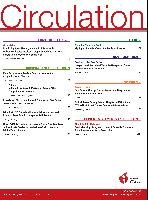
-
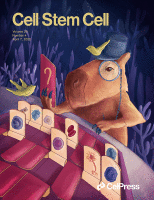
-
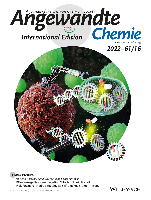
-
-
-
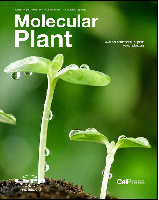
-
-
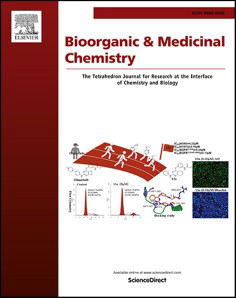
-
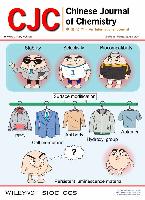
-
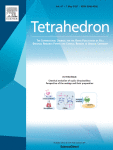
Hesperadin Is a Novel CaMKII-δ Inhibitor Hesperadin Exerts Dual Functions to Ameliorate Cardiac Ischemia/Reperfusion Injury and Inhibit Tumor Growth
Junxia Zhang; Ruqi Liang; Kai Wang; Wenjia Zhang; Mao Zhang; Li Jin; Peng Xie; Wen Zheng; Haibao Shang; Qingmei Hu; Jiayi Li; Gengjia Chen; Fujian Wu; Feng Lan; Lipeng Wang; Shi-Qiang Wang; Yongfeng Li; Yong Zhang; Jinghao Liu; Fengxiang Lv; Xinli Hu; Rui-Ping Xiao; Xiaoguang Lei; Yan Zhang.
Circulation 2022, 145, 1154-1168
Cardiac ischemia/reperfusion (I/R) injury has emerged as an important therapeutic target for ischemic heart disease, the leading cause of morbidity and mortality worldwide. At present, there is no effective therapy for reducing cardiac I/R injury. CaMKII (Ca2+/calmodulin-dependent kinase II) plays a pivotal role in the pathogenesis of severe heart conditions, including I/R injury. Pharmacological inhibition of CaMKII is an important strategy in the protection against myocardial damage and cardiac diseases. To date, there is no drug targeting CaMKII for the clinical therapy of heart disease. Furthermore, at present, there is no selective inhibitor of CaMKII-δ, the major CaMKII isoform in the heart.
A small-molecule cocktail promotes mammalian cardiomyocyte proliferation and heart regeneration
Jianyong Du, Lixia Zheng,Peng Gao, Hang Yang, Wan-Jie Yang, Fusheng Guo,Ruqi Liang,Mengying Feng, Zihao Wang,Zongwang Zhang, Linlu Bai,Ye Bu, Shijia Xing, Wen Zheng, Xuelian Wang, Li Quan, Xinli Hu, Haosen Wu,Zhixing Chen, Liangyi Chen, Ke Wei, Zhe Zhang, Xiaojun Zhu, Xiaolin Zhang, Qiang Tu, Shi-Min Zhao,* Xiaoguang Lei,* and Jing-Wei Xiong.*
Cell Stem Cell 2022, 29, 545.
Zebrafish and mammalian neonates possess robust cardiac regeneration via the induction of endogenous cardiomyocyte (CM) proliferation, but adult mammalian hearts have very limited regenerative potential. Developing small molecules for inducing adult mammalian heart regeneration has had limited success. We report a chemical cocktail of five small molecules (5SM) that promote adult CM proliferation and heart regeneration. A high-content chemical screen, along with an algorithm-aided prediction of small-molecule interactions, identified 5SM that efficiently induced CM cell cycle re-entry and cytokinesis. Intraperitoneal delivery of 5SM reversed the loss of heart function, induced CM proliferation, and decreased cardiac fibrosis after rat myocardial infarction. Mechanistically, 5SM potentially targets α1 adrenergic receptor, JAK1, DYRKs, PTEN, and MCT1 and is connected to lactate-LacRS2 signaling, leading to CM metabolic switching toward glycolysis/biosynthesis and CM de-differentiation before entering the cell-cycle. Our work sheds lights on the understanding CM regenerative mechanisms and opens therapeutic avenues for repairing the heart
Tuning an Imine Reductase for the Asymmetric Synthesis of Azacycloalkylamines by Concise Structure-Guided Engineering
Jun Zhang, Daohong Liao, Rongchang Chen, Fangfang Zhu, Yaqing Ma, Lei Gao,Ge Qu, Chengsen Cui, Zhoutong Sun,* Xiaoguang Lei,* and Shu-Shan Gao*
Angew. Chem. Int. Ed. 2022, 61, e202201908.
Although imine reductases (IREDs) are emerging as attractive reductive aminases (RedAms), their substrate scope is still narrow, and rational engineering is rare. Focusing on hydrogen bond reorganization and cavity expansion, a concise strategy combining rational cavity design, combinatorial active-site saturation test (CAST), and thermostability engineering was designed, that transformed the weakly active IR-G36 into a variant M5 with superior performance for the synthesis of (R)-3-benzylamino-1-Boc-piperidine, with a 4193-fold improvement in catalytic efficiency, a 16.2 °C improvement in Tm, and a significant increase in the e.e. value from 78% (R) to >99% (R). M5 exhibits broad substrate scope for the synthesis of diverse azacycloalkylamines, and the reaction was demonstrated on a hectogram-scale under industrially relevant conditions. Our study provides a compelling example of the preparation of versatile and efficient IREDs, with exciting opportunities in medicinal and process chemistry as well as synthetic biology.
Characterization of protein unfolding by fast cross-linking mass spectrometry using di-ortho-phthalaldehyde cross-linkers
Characterization of protein unfolding by fast cross-linking mass spectrometry using di-ortho-phthalaldehyde cross-linkers,
Jian-Hua Wang , Yu-Liang Tang, Zhou Gong, Rohit Jain , Fan Xiao, Yu Zhou , Dan Tan,Qiang Li, Niu Huang , Shu-Qun Liu, Keqiong Ye, Chun Tang *, Meng-Qiu Dong * &Xiaoguang Lei *
Nature Communications, 2022, 13(1), 1468
Chemical cross-linking of proteins coupled with mass spectrometry is widely used in protein structural analysis. In this study we develop a class of non-hydrolyzable amine-selective di-ortho-phthalaldehyde (DOPA) cross-linkers, one of which is called DOPA2. Cross-linking of proteins with DOPA2 is 60–120 times faster than that with the N-hydroxysuccinimide ester cross-linker DSS. Compared with DSS cross-links, DOPA2 cross-links show better agreement with the crystal structures of tested proteins. More importantly, DOPA2 has unique advantages when working at low pH, low temperature, or in the presence of denaturants. Using staphylococcal nuclease, bovine serum albumin, and bovine pancreatic ribonuclease A, we demonstrate that DOPA2 cross-linking provides abundant spatial information about the conformations of progressively denatured forms of these proteins. Furthermore, DOPA2 cross-linking allows time-course analysis of protein conformational changes during denaturant-induced unfolding. © 2022, The Author(s).
Polycarcin V induces DNA damage response and enables the profiling of DNA-binding proteins
Zongwei Yue, Fan Wu, Fusheng Guo, Jiyeong Park, Jin Wang, Liyun Zhang, Daohong Liao, Wenyang Li, Orlando D Schärer, Xiaoguang Lei
National Science Review, nwac046, https://doi.org/10.1093/nsr/nwac046
Published:
11 March 2022
To maintain genomic integrity and avoid diseases, the DNA damage response (DDR) not only detects and repairs DNA lesions, but also contributes to the resistance to DNA-damaging chemotherapeutics. Targeting the DDR plays a significant role in drug discovery using the principle of synthetic lethality. The incomplete current knowledge of the DDR encouraged us to develop new strategies to identify and study its components and pathways. Polycarcin V, belonging to the C-aryl glycoside natural products, is a light-activatable DNA intercalating agent which causes DNA damage by forming a covalent [2+2] cycloadduct with thymine residue under 365–450 nm light irradiation in a DNA sequence independent manner. Taking advantage of the light-activatable feature and temporal control of DDR, we designed and synthesized polycarcin V-based bifunctional chemical probes, including one that crosslinks DNA to DNA-binding protein to explore the DDR induced by polycarcin V and uncover novel DNA-protein interactions. Utilizing this chemical probe and ABPP-SILAC, we identified 311 DNA-binding proteins, including known DDR factors and additional proteins that may be of interest in discovering new biology. We validated our approach by showing that our probe could specifically crosslink proteins involved in nucleotide excision repair (NER) that repair bulky DNA adducts. Our studies showed that the [2+2] cycloadduct formed by polycarcin V could indeed be repaired by NER in vivo. As a DNA damaging agent, polycarcin V or its drug-like derivative plus blue light showed promising properties for psoriasis treatment, suggesting that it may itself hold promise for clinic applications.
Dynamic changes of phosphatidylinositol and phosphatidylinositol 4-phosphate levels modulate H+-ATPase and Na+/H+ antiporter activities to maintain ion homeostasis in Arabidopsis under salt stress
Molecular Plant, 2021, 14(12), pp. 2000–2014
Yongqing Yang, Xiuli Han, Liang Ma, Yujiao Wu, Xiao Liu, Haiqi Fu, Guoyong Liu,
Xiaoguang Lei*, Yan Guo*
Plant metabolites are dynamically modified and distributed in response to environmental changes. However, it is poorly understood how metabolic change functions in plant stress responses. Maintaining ion homeostasis under salt stress requires coordinated activation of two types of central regulators: plasma membrane (PM) H+-ATPase and Na+/H+ antiporter. In this study, we used a bioassay-guided isolation approach to identify endogenous small molecules that affect PM H+-ATPase and Na+/H+ antiporter activities and identified phosphatidylinositol (PI), which inhibits PM H+-ATPase activity under non-stress conditions in Arabidopsis by directly binding to the C terminus of the PM H+-ATPase AHA2. Under salt stress, the phosphatidylinositol 4-phosphate-to-phosphatidylinositol (PI4P-to-PI) ratio increased, and PI4P bound and activated the PM Na+/H+ antiporter. PI prefers binding to the inactive form of PM H+-ATPase, while PI4P tends to bind to the active form of the Na+/H+ antiporter. Consistent with this, pis1 mutants, with reduced levels of PI, displayed increased PM H+-ATPase activity and salt stress tolerance, while the pi4kβ1 mutant, with reduced levels of PI4P, displayed reduced PM Na+/H+ antiporter activity and salt stress tolerance. Collectively, our results reveal that the dynamic change between PI and PI4P in response to salt stress in Arabidopsis is crucial for maintaining ion homeostasis to protect plants from unfavorable environmental conditions
Enzymatic control of endo- and exo-stereoselective Diels–Alder reactions with broad substrate scope
Lei Gao, Yike Zou, Xiaojing Liu, Jun Yang, Xiaoxia Du, Jin Wang, Xinshui Yu, Junping Fan,
Mingxuan Jiang , Yuli Li, K. N. Houk* and Xiaoguang Lei*
Nature Catalysis volume 4, pages1059–1069 (2021) https://doi.org/10.1038/s41929-021-00717-8
Natural Diels–Alderases that selectively form endo or exo products are increasingly well known but generally form one stereoisomer with limited substrate scope. Here we report the discovery of two homologous groups of flavin-adenine-dinucleotide-dependent enzymes that catalyse intermolecular Diels–Alder reactions on the same substrates with opposite endo/exo selectivity and high enantioselectivity. We show that these enzymes are effective biocatalysts with a wide range of diene and dienophile substrates. The crystal structure of an exo-selective Diels–Alderase was determined at 2.94 Å resolution. Based on the structure and computational investigation of the catalytic mechanism, we designed and prepared mutant enzymes that reverse the stereoselectivity from exo to endo. A combination of structure-based comparison, computational and mutational studies have revealed two different catalytic mechanisms that control the endo/exo selectivity in these enzymatic Diels–Alder reactions.
Structure-guided optimization of D-captopril for discovery of potent NDM-1 inhibitors
Guixing Ma, Sanshan Wang , Kebin Wu, Weizhe Zhang, Ashfaq Ahmad, Quan Hao *,Xiaoguang Lei *, Hongmin Zhang *
Bioorganic and Medicinal Chemistry 29.(2021) .115902
β-lactam antibiotics have long been the mainstay for the treatment of bacterial infections. New Delhi metallo-
β-lactamase 1 (NDM-1) is able to hydrolyze nearly all β-lactam antibiotics and even clinically used serine-
β-lactamase inhibitors. The wide and rapid spreading of NDM-1 gene among pathogenic bacteria has attracted
extensive attention, therefore high potency NDM-1 inhibitors are urgently needed. Here we report a series of
structure-guided design of D-captopril derivatives that can inhibit the activity of NDM-1 in vitro and at cellular
levels. Structural comparison indicates the mechanisms of inhibition enhancement and provides insights for
further inhibitor optimization.
Function-Oriented Natural Product Synthesis
Kaiqi Chen, Fan Wu, Xiaoguang Lei*
Chinese Journal of Chemistry, 2021, 39(4), pp. 838–854
Natural products and their derivatives have long been used as medicinal agents, and they still make up a significant fraction of clinically approved drugs. Natural product synthesis provides a rich and unparalleled opportunity to develop new synthetic transformations, conceive novel and general strategies to access complex structures, and study the mechanism of action of bioactive targets. The combination of the tools and principles of chemistry, together with the tools of modern biology, allows us to create complex synthetic and natural molecules, comprising processes with novel biological, chemical and physical properties. This account will illustrate the opportunities that lie at this interface between synthetic organic chemistry and chemical biology by describing a series of examples that we are actively working on in our laboratory at Peking University. We take the inspiration from mother nature to develop new synthetic strategies to achieve the efficient synthesis of complex natural products. In addition, we also conduct chemical biology studies for these bioactive natural products to elucidate their cellular targets and mode of action. Moreover, we further use bioactive natural products to explore new biology and develop novel drug candidates for human diseases, such as cancers and infectious diseases
Concise total synthesis of nauclefine: A regioselective Rhodium(III)-catalyzed oxidative C-H activation approach
Kaiqi Chen , Haoran Dong, Jin Wang, Xiaoguang Lei , *
Tetrahedron, 2021, 87, 132120
A concise total synthesis of the plant indole alkaloid natural product nauclefine (1) was accomplished from the commercially available nicotinic acid and the known compound in 6 steps. The synthesis features a regioselective rhodium(III)-catalyzed oxidative C-H activation for the construction of the key naphthyridinone ring. The intramolecular Mitsunobu-type annulation, allylic oxidation and Fischer indolization were used successively to complete the total synthesis of nauclefine (1).